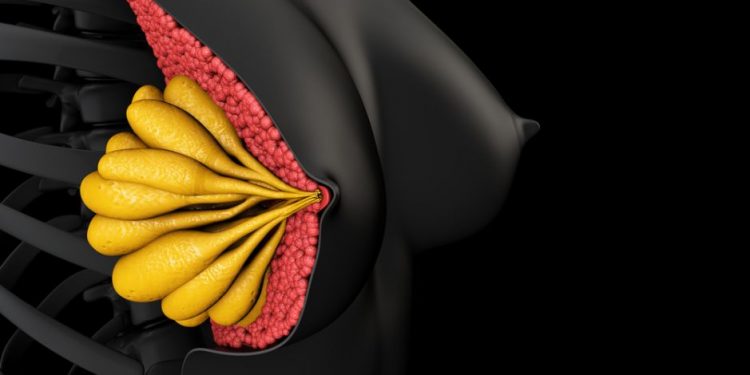DCIS is found when abnormal cells grow in the lining of a breast duct. It is a precancerous condition and it can sometimes turn into an invasive cancer, which can spread to surrounding tissue and other parts of the body. In some cases the DCIS will never develop into an invasive cancer or it may do so very slowly over a lifetime, but at present there is no way to predict which DCIS will become invasive. DCIS is also known as intraductal breast carcinoma and ductal carcinoma in situ (DCIS).
Usually, doctors spot DCIS by examining the breast tissue with a special mammogram called a tomosynthesis mammogram. This takes high-resolution images of the breast from different angles and uses more powerful magnification to get a closer look at the area in question. The images can pick up small changes in the appearance of a breast – mainly tiny flecks of calcium or shadows that may indicate the presence of a cancerous tumour.
DCIS can be confirmed by biopsy; samples of the abnormal cells are taken and examined in a lab to confirm the diagnosis. Most women with DCIS have surgery to remove the area of DCIS and a border of healthy tissue around it. This is called breast conserving surgery, or wide local excision (WLE) or a lumpectomy. Some women who have DCIS with a higher grade of cells might have a further treatment with radiotherapy to the remaining breast tissue, to kill off any cells that might be still growing.

A diagnosis of DCIS can be a very emotional time for women. It is common for people to feel anxious and frightened when told that they have an early form of cancer, even though there is good news that the majority will not go on to cause them any harm.
It is important for people who have been diagnosed with DCIS to be treated by specialist teams at well-resourced breast centres and hospitals. This will ensure that they have access to the most up-to-date treatment options.
In addition, DCIS is a good reason for people to get regular screening mammograms from the age of 50, even if they have no other symptoms or concerns. Getting mammograms regularly will help identify any abnormalities sooner so that they can be dealt with quickly.
It is also very important for people who have had DCIS to see their doctor or breast care nurse as soon as they notice any new breast symptoms, particularly a lump, pain or discharge from the nipple. This can help to prevent the cancer from spreading or growing, and also to make sure that any treatment they have is effective.









